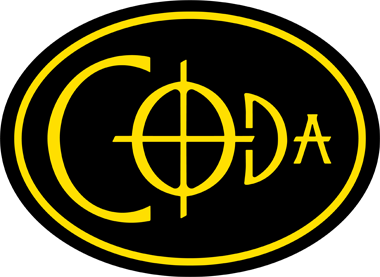A Simple Song to Get Started
Before you try playing your first simple song, make sure that you have listened to the Simple Code for Understanding the Fingering Charts.
To play your first song, “Hot Cross Buns,” you’ll use just 3 notes: B, A, and G, which spell “bag.”
Have Coda in your hands and practice fingering these notes as I describe them.
Low B is LM, L1, BT. Again, B is LM, L1, BT.
(By the way, I suggest that you lightly support the tail end of Coda with your right pinky on higher notes like B.)
Low A is LM, L12, BT. Again, A is LM, L12, BT.
Low G is LM, L123, BT. Again, G is LM, L123, BT.
So, covering both thumb holes, B is L1, A is L12, and G is L123.
If you’ve never played a wind instrument before, you can start each note crisply by tonguing. There are various tonguing techniques, but a simple way to get started is to whisper “Too, Too, Too” to start each note.
Also, I suggested that you can lightly support the tail end of Coda with your right pinky finger on the upper notes of each chamber, but you don’t do that for all the notes. Just use your right pinky for a little extra balance for holding Coda when you play the upper notes on each chamber. With practice, supporting the end of Coda with your right pinky will feel very natural and will become completely automatic, but it’s awkward at first, and you have to be very intentional about it until it becomes an unconscious habit.
Where were we? Oh, yeah, Hot Cross Buns:
I’ll try singing it now using the note names, B, A, G. As I sing the note names, try silently fingering each note on Coda. Warning: my singing won’t be in tune or even in the right key, but you are not allowed to snicker at my lousy singing skills. I’m doing this for your benefit, okay?
B, A, G,
B, A, G
G, G, G, G
A, A, A, A
B, A, G
Now I’ll play it on Coda.
To play the same song one octave higher, use exactly the same fingerings, but blow into the right side of the mouthpiece.
When I’m finally done talking, try the song yourself, if you haven’t already. Be sure to play it super slowly at first. If any notes sound really out of tune, like higher in pitch than they should be, it’s probably because you are not completely covering all the tone holes. Don’t worry! That’s a common challenge at first, and you’ll soon get better at it.
By the way, covering the tone holes completely with the pads of your fingers is not a question of squeezing harder. Really, you eventually want to learn to play with relaxed fingers. Instead, it’s just about having your fingers in the right positions. Oh, and Silent Fingering Exercises are a great way to speed up the process of placing your fingers in the correct positions.
Have fun playing Hot Cross Buns! And be sure to contact us if you have any suggestions about how we can be more helpful.




